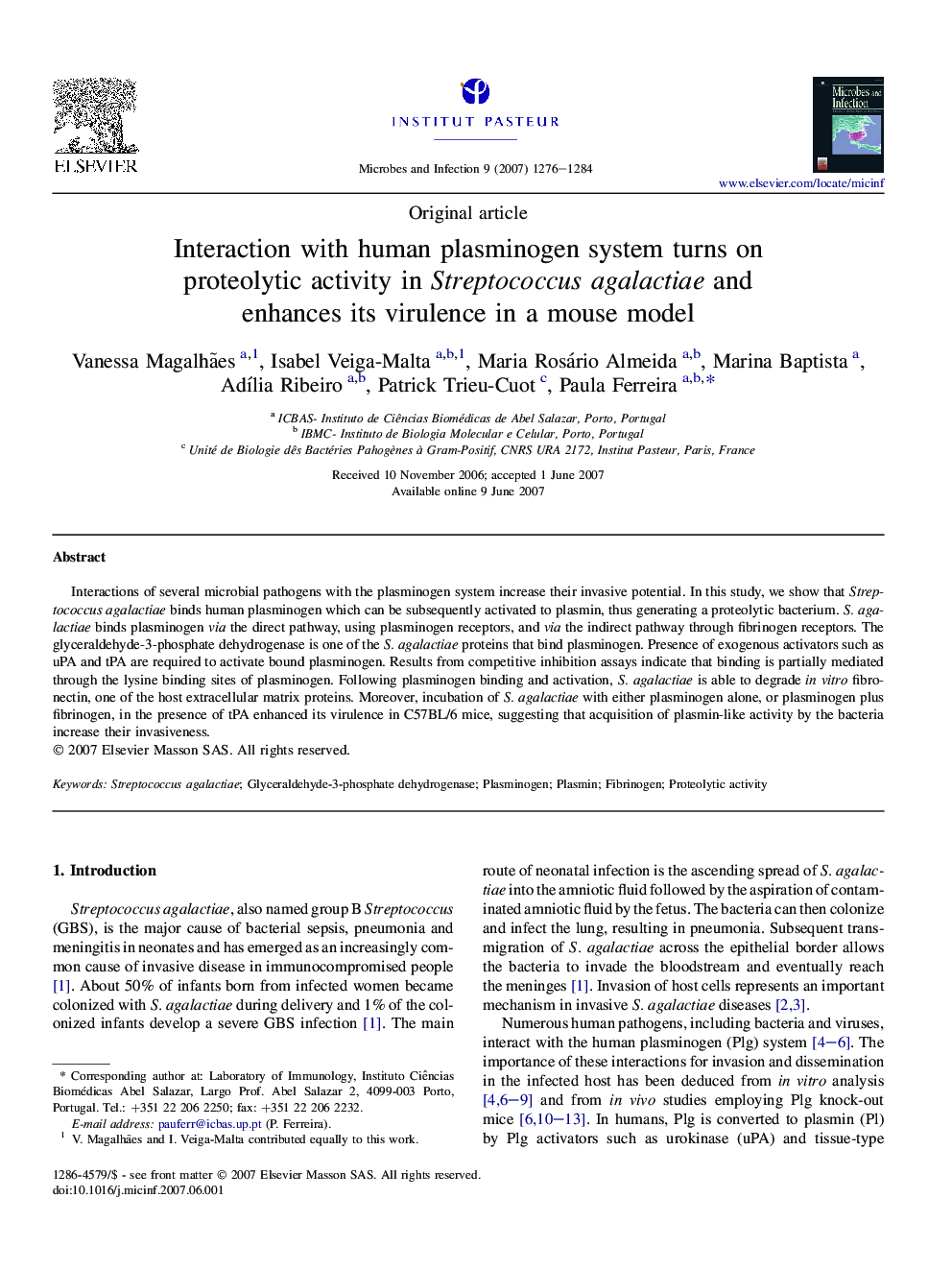| Article ID | Journal | Published Year | Pages | File Type |
|---|---|---|---|---|
| 3415315 | Microbes and Infection | 2007 | 9 Pages |
Interactions of several microbial pathogens with the plasminogen system increase their invasive potential. In this study, we show that Streptococcus agalactiae binds human plasminogen which can be subsequently activated to plasmin, thus generating a proteolytic bacterium. S. agalactiae binds plasminogen via the direct pathway, using plasminogen receptors, and via the indirect pathway through fibrinogen receptors. The glyceraldehyde-3-phosphate dehydrogenase is one of the S. agalactiae proteins that bind plasminogen. Presence of exogenous activators such as uPA and tPA are required to activate bound plasminogen. Results from competitive inhibition assays indicate that binding is partially mediated through the lysine binding sites of plasminogen. Following plasminogen binding and activation, S. agalactiae is able to degrade in vitro fibronectin, one of the host extracellular matrix proteins. Moreover, incubation of S. agalactiae with either plasminogen alone, or plasminogen plus fibrinogen, in the presence of tPA enhanced its virulence in C57BL/6 mice, suggesting that acquisition of plasmin-like activity by the bacteria increase their invasiveness.
